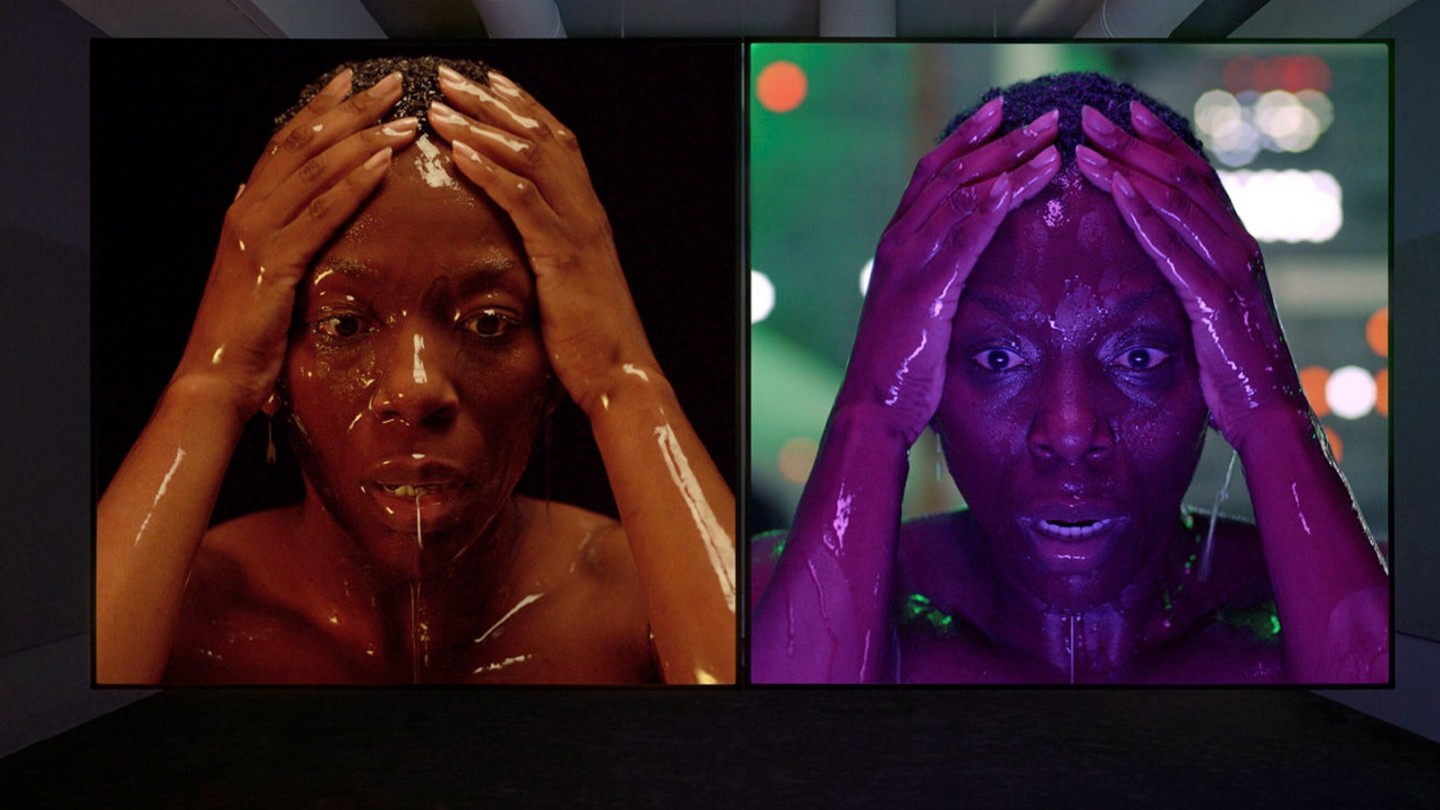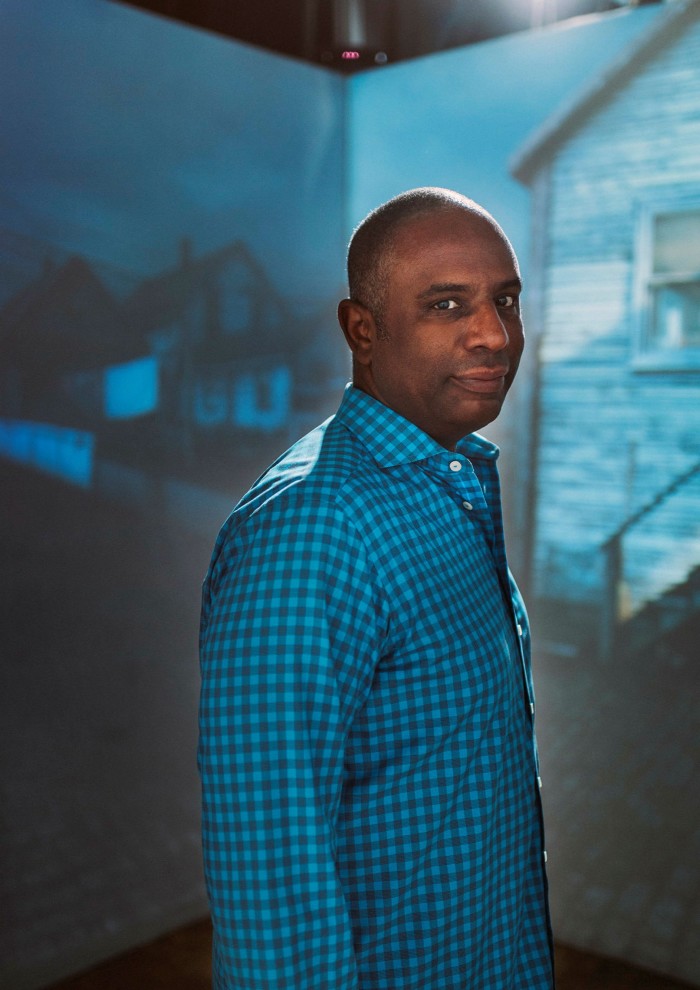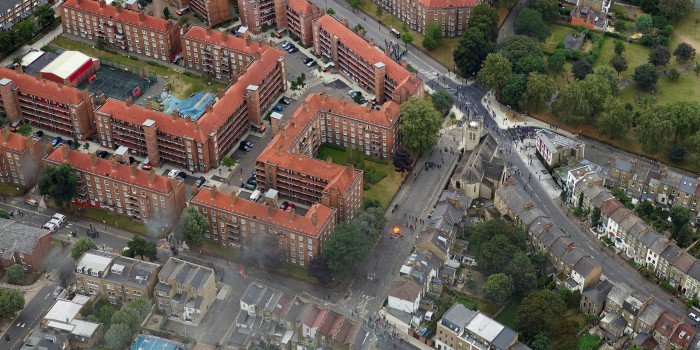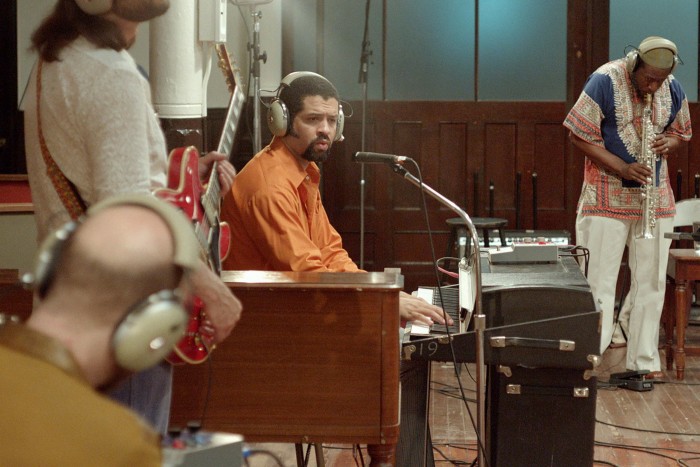Artist Stan Douglas: ‘Failure — or success — is determined by the market’

Roula Khalaf, Editor of the FT, selects her favourite stories in this weekly newsletter.
The Canadian artist Stan Douglas lives between Vancouver, where he has his studio, and Los Angeles, where he heads the graduate art programme at Pasadena’s ArtCenter College of Design. His favourite record stores, though, are in London and Berlin: Sounds of the Universe in Soho, and its in-house label Soul Jazz, are an unparalleled resource of funk, soul, reggae and dubstep; Hard Wax in Berlin is the sanctioned centre of techno.
Music has permeated Douglas’s life: he was named after the jazz performer Stan Kenton and fell in love with John Coltrane early on. Studying fine art in Vancouver in the late 1970s, he started making slideshows, then films, using archive materials. On Friday nights he DJ’d in a local gay bar, splicing Herbie Hancock tracks he’d picked up in New York into other hits, reviving the venue’s fortunes in the process.
Since then, in his film works, Douglas has often used music to elaborate on the sticky issues of race, class and social inequality. An early audio and slide projection work — “Deux Devises” (1983) — questions assumptions of European superiority, “measuring” a formal 19th-century ballad against the febrile improvisational blues of Robert Johnson. A fictional recording session in “Luanda-Kinshasa” (2013) imagines what would have happened if Miles Davis had discovered Afrobeat.
“Music,” says Douglas, over Zoom from his kitchen in LA, “is a time-based medium and a model of how people share time together. Film is too.” This year, Douglas will be bringing both to the Venice Biennale, where he is representing Canada, having been commissioned by the National Gallery of Canada.

Douglas, 61, is no newcomer to Venice. He has taken part in the event four times previously, going back to 1990. “That was my first time exhibiting in Europe,” he says. “Some artists were charming, like Thomas Struth. Some were so awful I’d never speak to them again.” He returned in 2001, 2005 and 2019, swept along in the art world’s evolution. “Now failure — or success — is determined by the market,” he says. “But certainly in the early days, it was about critical reputation. And the higher up people were, the more generous.”
He is still more invested in the social and cultural value of art than market forces. Respect for his elaborately produced reimaginings of real events and his inventive film work is signalled by his presence in important institutional collections rather than causing a commotion in the auction house. He is also a dedicated educator. “Teaching is good for getting to understand what other people are thinking,” he says. “And for fully understanding the books I’m reading.”
Douglas’s work often evokes dual situations. “Disco Angola” (2012), for example, offers up two suites of staged photographs of simultaneous events: New York’s 1970s disco scene (itself a response to chronic urban decline) and Angola’s tense postcolonial moment. “It’s a very subjective connection,” says Douglas of this and other works. “Doppelgänger” (2019) shows a female astronaut returning to earth, in one sequence as a hero, in another as a reject. “Two is the first number where you get to have a conversation, a dialogue,” he says. It implies a lack of dogma too: that there are at least two answers to every question.
So it’s perhaps appropriate that he is bringing a two-sided presentation to Venice. The massive photographs (10ft high) will be shown in the Canadian pavilion in the Giardini, a greenhouse-like space washed with even daylight. The film is being screened in the Magazzini del Sale, the atmospheric salt warehouses near the Punta della Dogana that date back to the 16th century.

The photographic series — called “2011 ≠ 1848” — was already a work in progress when he got the Biennale call. In 2017, Douglas had constructed two photographic works from imagery derived from the London riots of 2011, layering stills from news footage into two high-resolution aerial shots of Hackney, one of the boroughs caught up in the storm. These hybrid works show not violence but the moment before police interception. “There was almost a carnival atmosphere,” says Douglas. “People were enjoying being there, occupying the space.”
Given the Biennale’s green light, Douglas has reworked one Hackney piece and added three more scenarios, also from 2011: the Occupy events in New York; the Arab Spring uprising in Tunis; and the riots in Vancouver that followed the defeat of the local Canucks in an ice-hockey tournament. “All are the result of the rippling effects of the financial crisis of 2008,” says Douglas, “in the same way that, in 1848, there were simultaneous uprisings demanding a fairer society across Europe. While that was helped by the medium of print, in 2011 it was digital communication that was the unifying factor.”
However, where 1848 did produce changes and the creation of nation states, Douglas’s does-not-equal sign gloomily suggests that 2011 did not. “The four photographs are tough,” concedes the pavillion’s curator, Reid Shier, who has worked with Douglas on and off since 2002. “There is a pessimism to them. In each scenario there are two constituencies: it’s about the police trying to move people out of a place they simply want to own. And that contestation of space takes it back to 1848.”

Back in the musical world, however, the film in the Magazzini — called “ISDN” after a system for carrying digital communication — should provide an upbeat counterbalance as Douglas revels in the work of grime artists from London and Mahraganat musicians from Cairo, with their inadvertent commonality.
“I got into UK’s grime when I got turned off US rap, when it became too misogynistic,” says Douglas, who still turns his hand to the occasional spot of DJing. “Grime lyrics cover the politics of everyday.” Intrigued by the possibility of a parallel movement elsewhere, searches on the internet brought him to Mahraganat in Egypt — Chaabi pop put through an electronic filter. “In London and Cairo they use the same pirated software called Fruity Loops, they use old Pro Tools that still work really well. It’s all about making something with what you’ve got,” says Douglas. “Musicians will use anything that’s not broken.”
Taking both genres to 140 beats per minute (the chosen speed of grime; the Egyptians work at a faster 145, according to the artist), Douglas creates an imaginary call and response. It’s a collaboration that might well be an artifice, but shows how breaking down borders can be more than a dream.
April 23-November 27, gallery.ca

Comments